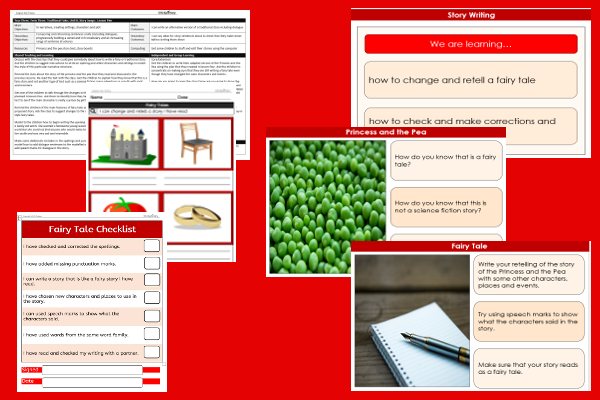Lesson Five – Story Writing

This English teaching pack for Key Stage Two gets the children to draft and edit an alternative version of a traditional tale to match the original text genre and style to illustrate changes with different characters, settings and objects.
The class can practise using a checklist to review and make changes and improvements to their narrative writing so that it effectively represents a traditional tale.
Download this teaching pack including a lesson plan, classroom activities and an interactive presentation to draft and edit an alternative version of a traditional tale to match the original text genre and style to illustrate changes with different characters, settings and objects
Activities in this teaching pack include a template to draft and edit an alternative version of a traditional tale to match the original text genre and style and a worksheet to use a checklist to review and make changes and improvements to narrative writing.
The interactive presentation gets the children to explore how to draft and edit an alternative version of a traditional tale to match the original text genre and style.
This lesson is part of an English scheme of work to get the children to practise writing and editing an alternative version of a traditional story by swapping characters, settings and plot events, identify and spell families of words with prefixes and suffixes and punctuate direct speech in dialogue. There are teaching activities for shared learning, differentiated worksheets to support independent learning and interactive presentations to introduce concepts and key skills.
-

Determinant Lists
Explain and model how to make lists of objects used and found in different locations to match the correct determinants of a and an
-

English SPAG Assessment
Assess abilities in composing sentences for fiction and non-fiction using the correct spellings, punctuation marks and grammar vocabulary phrases
-

Maths Arithmetic Assessment
Assess abilities in solving arithmetic number problems for addition, subtraction, multiplication and division when working with informal and formal written calculations
-

Environment
Identify and describe some of the special landscapes and locations that can be found in the world and reflect on how they can be protected and preserved for the future
